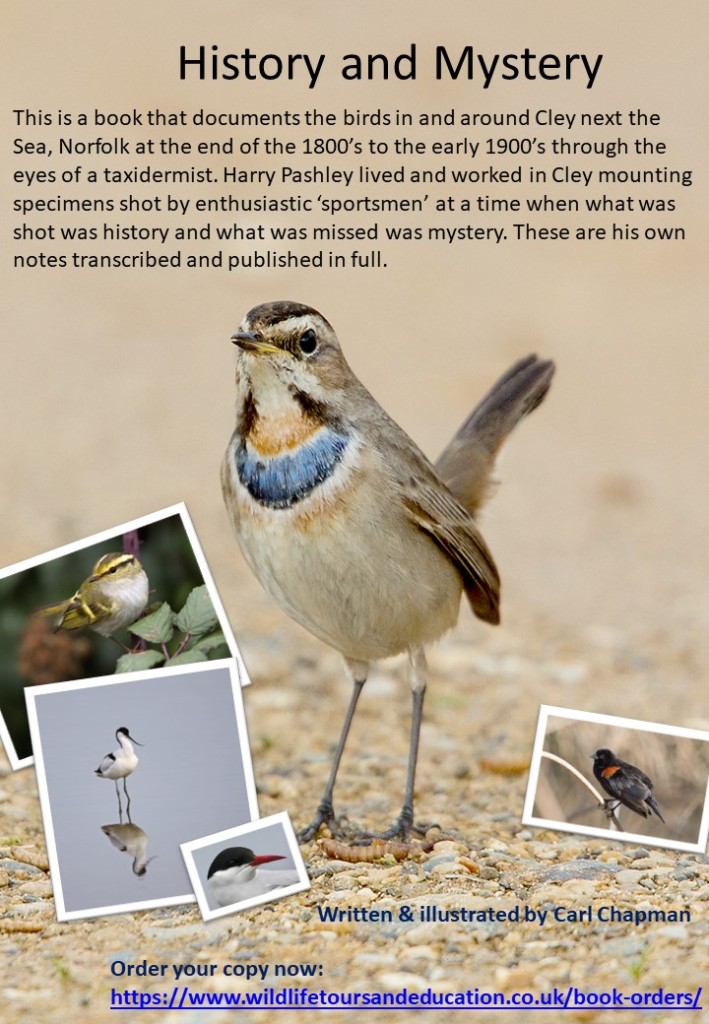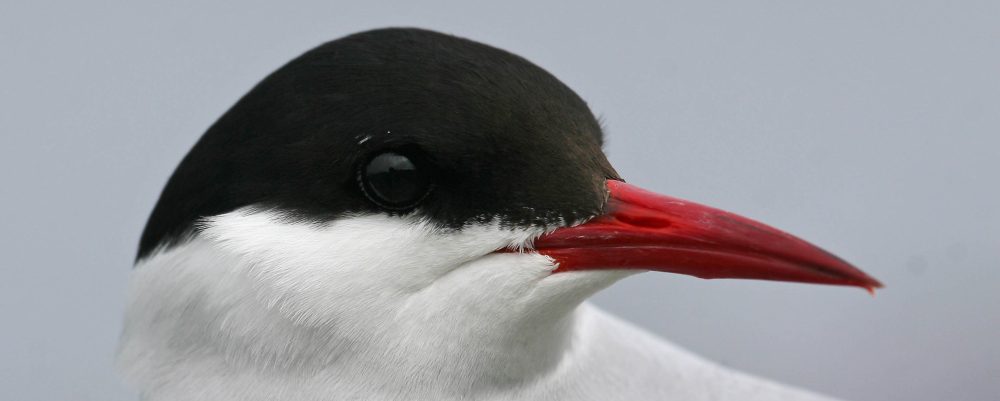
A New Book by Carl Chapman
Image
Reply


When I was gifted a copy of Witherby’s ‘A Hand List of British Birds’ for the Norfolk and Norwich Naturalists’ Society research library, I initially didn’t realise its significance. The book published in 1912 was the personal copy of Harry Pashley, a taxidermist that lived in Cley next the Sea on the north Norfolk coast during the late 19th and early 20th Century. Stitched into the binding were Harry’s own personal notes.
‘History and Mystery’ is a 131pp transcript of those notes coupled with additional research and over 70 photographs of birds seen in north Norfolk.
The price of £18 includes packaging and 2nd class postage within the UK.
Order your copy here https://wildlifetoursandeducation.co.uk/book-orders

You’ll see that the layout of ‘Letter from Norfolk’ has changed slightly. Friend Bob made me aware that he was unable to see posts on the site. When I investigated further ‘WordPress’, the hosts of the site, have mucked around with things at their end which made the site difficult if not impossible to see on a desktop or tablet although it was still ok on a mobile.
To see photographs just click on the title of the post. From there you can navigate through previous posts with the arrows on the top of the page. The site will probably morph a little over the coming weeks as I tweak it a little. So you will see a few changes.
In the meantime here’s a Red-backed Fairy Wren hunting spiders in Australia last November.
I’ll take this opportunity to wish everyone a Merry Christmas from Tania and myself.
This evening we went to Cley and had the most marvellous display of Noctilucent Clouds. They occur when ice crystals form and refract light high in the atmosphere. The phenomena has been reported quite a lot in the news recently having become more regular in the last few weeks. I presume the eruption in Iceland pushing dust into the high atmosphere has something to do with this; the dust acting as a seed for the ice to form. Although this is not said with any researched knowledge. Even so … a nice backdrop for Santa on his deliveries tonight. Merry Christmas.


On the 10th November I put a post up on here that expressed my surprise at how common the Bush Stone Curlew was in Queensland. This generated a little bit of ‘chatter’ both on Facebook and directly by email as to how much more difficult Beach Stone Curlew was to find. Naaaaa. Dead easy.
All photos from Queensland are now uploaded to the ‘Wildcatch’ site and can be viewed here
https://wildcatchphotography.zenfolio.com/p34814967

The idea when visiting Thailand and Australia this Autumn was to see certain things and not chase everything; to focus on a very few animals we would like to see and if anything else came along that would be the icing on the cake. The last thing I wanted to do over this month was to chase here and there for every endemic possible. In Thailand it was Bryde’s Whale. In Queensland it was to be Southern Cassowary … that was our wish.
We are staying at Cassowary House in Karunda. The (once) renowned place for seeing a bird that had been on my radar since I was a child. Sadly the place has gone downhill and it is not what it was. You live and learn. Talking to locals I know now where I should be stopping in future. Anyways, the idea was to see a Cassowary but the chances of it happening at Cassowary House are slim.
Cassowaries are probably the closest you will get to a living dinosaur. A relict of the past. Now endangered and reducing in numbers. Finding one was not going to be easy. How something taller than a man and more boldly coloured than a Van Gough painting can evade detection is surreal in itself. As I always tell my guests ‘things show on their own terms’. All I can do is be in the right place and hope that it’s the right time. Today the stars aligned.
We were South of Cairns where the Mangroves meet the Sea. A blowy day the waves were breaking on golden sands and washing into the forest.
Tania has eyes like a Sh*t House rat. It was always going to be her who saw it first.
I drew a large breath and just watched it for a while. Then I raised the camera and took photos. A childhood dream was realised.
It was among the Mangroves. I walked parallel to it out on the beach. The bird, a male, sat down in the water among mangrove roots and bathed himself, preened himself and shook away the dirt of the night. I leaned on a mangrove root some 5m away from it and watched the morning ablutions of the most amazing bird I have ever seen; it felt like hours but in fact was just short of 30 minutes. When he’d finished I watched him merge into the mangroves and once more become unseen in the landscape.

When anyone talks of anything big and green my mind flips to ‘Dreamworks’ and Shrek!
I was tutoring a course on Advanced Bird Watching this week at the Field Studies Centre down at Flatford in Suffolk. One of the day trips we made was out to the coast at Minsmere. This gave us some opportunities to see some good birds. However we came across about five Great Green Bush Crickets. Now, when I’ve found this species previously it has been difficult to find and observe. Not so at Minsmere this week. They were out on the footpaths and perching in the open.
If you’ve never seen this insect before they are large. One in particular was the length of my fingers and palm. Apparently they can offer up a nasty nip.
I have never associated GG Bush Crickets with migration; but I’m just wondering with us finding so many (relatively) at a coastal location and them being so confiding if these guys could have made it in from the continent? We certainly did see one fly around 50m or so, strongly too, but could they make it across the North Sea?… I’m not so sure.

I welcomed my first guest to Wild Ken Hill on the 24th July 2021. Since then I have led 117 groups around the 4000-acre estate in West Norfolk. I was pleased that today Holly James was the 1000th guest I have taken around the estate, and I was delighted to present her with a nice bottle of wine to celebrate the milestone.
I couldn’t have had a better group to help celebrate the occasion.
When I opened up the barn this morning a delightfully worded card along with a gift was waiting for me.
It has been such a privilege to play a small ‘walk-on’ part over the past two years in the Wild Ken Hill performance orchestrated by the Buscal family. I have waited many years for the things I now see happening within agriculture to benefit our wildlife.
If you wish to see first hand the carbon sequestration and how wildlife thrives under regenerative agriculture book a tour (https://wildkenhill.co.uk/guided-tours/) and come along. I promise you … you will not be disappointed.




It was a cold day on the 6th June. Flaming … it was not. A drive to Lincolnshire on the quest for Marsh Fritillary almost seemed folly. For most of the journey it rained. Twice the sun shone; but for less than a minute.
My opening comment to my guests on arrival at the site was “This is going to be challenging” … and challenging it was. However, who knew Marsh Fritillaries were like buses. No sooner had one been found shivering in the undergrowth than several more popped into view.
